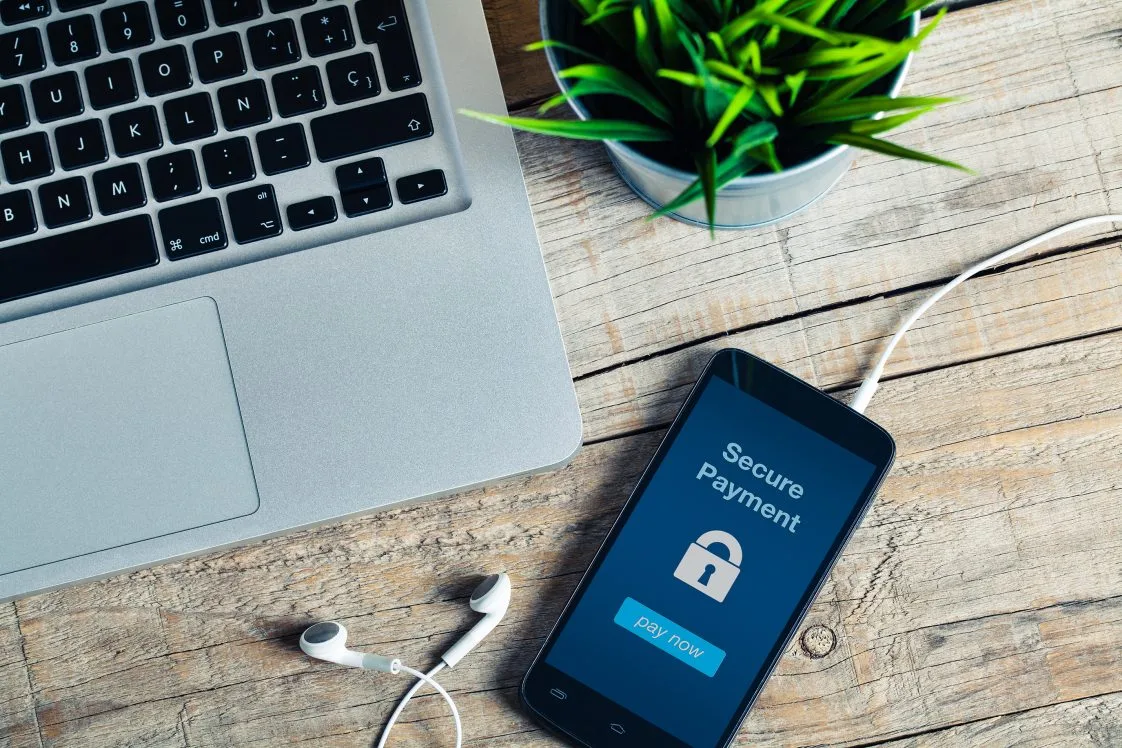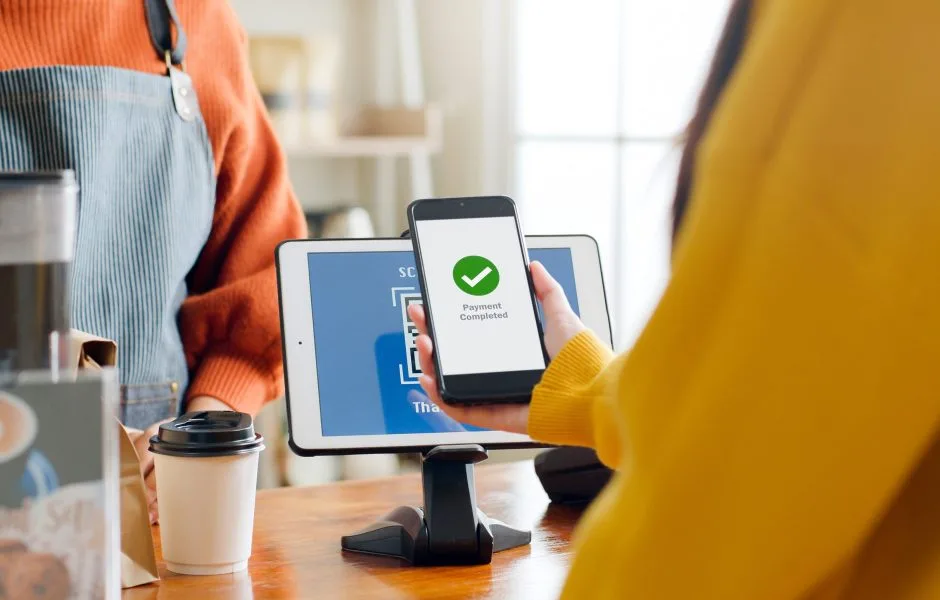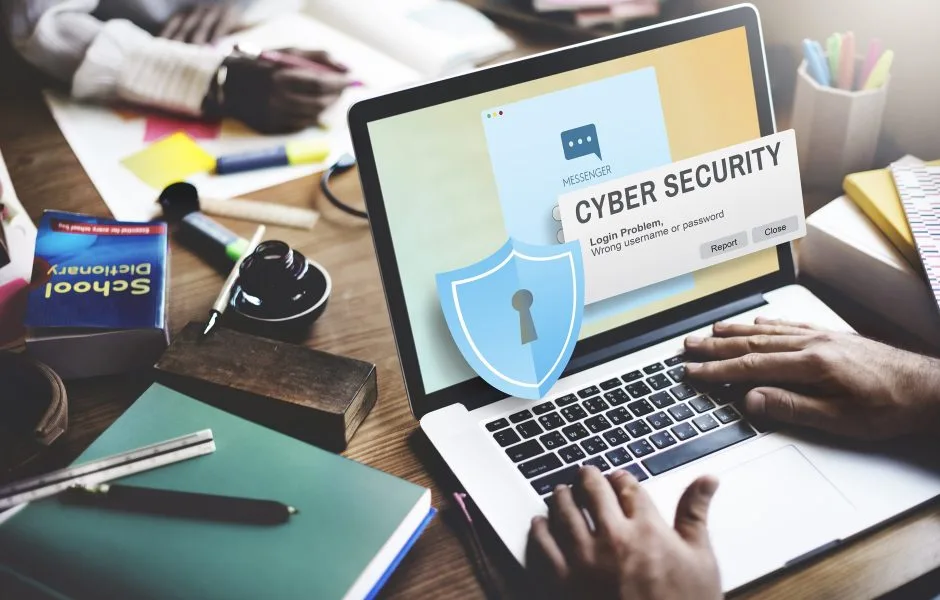Navigating Safe and Secure Payment Gateways
Secure payment gateways for small businesses, startups, large businesses, and enterprises form the backbone of secure online transactions.
Payment gateways act as virtual checkpoints in the intricate journey of an online payment. Whether someone pays with a digital wallet, Mastercard, Visa, Discover, or American Express card, a payment gateway facilitates the secure passage of financial data between the customer, the merchant, and the financial institutions involved in the transaction. This process involves encryption, validation, and authorization to ensure that sensitive information, such as debit cards and credit card details, remains protected from unauthorized access during the digital exchange.
The importance of secure payment gateways for small businesses, startups, large businesses, and enterprises extends far beyond the mere facilitation of transactions online and in-person at the point of sale. In an era where cyber threats are both sophisticated and pervasive, a secure payment gateway acts as the digital fortress, safeguarding sensitive financial information and preserving the trust between customers and businesses. It forms the backbone of secure online transactions, offering a shield against potential threats like data breaches, identity theft, and fraudulent activities.
As consumers increasingly turn to online platforms for their shopping needs, the integrity of payment gateways becomes synonymous with the trustworthiness of the entire digital commerce ecosystem. This article navigates the intricacies of secure payment gateways, shedding light on the critical role they play in ensuring the safety and reliability of online transactions.
Understanding Payment Gateways in eCommerce
To comprehend the workings of payment gateways, envision them as the digital equivalent of a secure bridge that connects the buyer’s financial realm with that of the seller. The process begins when a customer initiates a purchase on an eCommerce platform via the shopping cart.
A merchant account serves as the repository where funds from card transactions are temporarily held before being transferred to the business bank account. The payment gateway then acts as the secure conduit facilitating the transfer of transaction data between the merchant’s website and the financial institutions involved. Once the customer completes the checkout process on an online store and opts to pay, the payment gateway comes into action.
- Encryption: At the forefront of security, payment gateways employ sophisticated encryption protocols. The customer’s payment information, including credit card details, is encrypted to ensure that even if intercepted, the data remains indecipherable to unauthorized entities.
- Authorization Request: Subsequently, the encrypted payment details are sent securely to the payment gateway. The payment gateway, acting as an intermediary, forwards this information to the payment processor or acquiring bank.
- Authorization from Issuing Bank: The acquiring bank then contacts the customer’s issuing bank to verify the legitimacy of the transaction. This step involves checking the availability of funds, ensuring the card hasn’t been reported as lost or stolen, and confirming other relevant details.
- Transaction Approval or Denial: Based on the response from the issuing bank, the payment gateway either approves or denies the transaction. If approved, the funds are reserved, and the purchase proceeds. If denied, the customer is informed of the unsuccessful transaction.
- Completion of Transaction: Finally, the payment gateway communicates the outcome to the eCommerce platform, allowing the merchant to fulfill the order. This entire process typically occurs in a matter of seconds, ensuring a seamless and secure card transaction experience for the customer.
Role in eCommerce Transactions
Payment gateways play a multifaceted role in eCommerce transactions, extending beyond the mere facilitation of payments. Their significance is underscored by several key functions:
- User-Friendly Transactions: Payment gateways contribute to the user-friendliness of eCommerce platforms. By offering a secure and streamlined payment process, service providers enhance the overall customer experience, reducing friction and increasing the likelihood of successful credit card transactions.
- Global Accessibility: In the global landscape of online commerce, payment gateways enable businesses to transcend geographical boundaries. They facilitate international payments in various currencies and cater to diverse payment methods, accommodating a broad spectrum of customers worldwide.
- Security Assurance: The paramount role of payment gateways is to ensure the security and confidentiality of sensitive financial information. By implementing robust encryption and security measures, they create a trustworthy environment for both consumers and merchants.
- Transaction Record Keeping: Payment gateways maintain detailed records of transactions, providing merchants with valuable insights into their sales, customer preferences, and financial performance. This data can be instrumental in refining business strategies and optimizing the customer experience.
- Fraud Prevention: eCommerce fraud statistics tell us that fraudulent activities pose a persistent threat. With the rise of cyber threats, payment gateways incorporate sophisticated merchant fraud protection mechanisms. Through features like real-time transaction monitoring and advanced analytics, they identify and mitigate potential fraudulent activities like chargebacks, safeguarding businesses and customers alike.

Features of Secure Gateways & Payment Solutions
As our lives become increasingly intertwined with the digital realm, the significance of secure online transactions stands as a cornerstone in the foundation of a trustworthy and resilient digital economy. As users entrust sensitive data to payment gateways, understanding and fortifying these security measures become paramount to foster confidence and reliability in the digital commerce landscape.
- Encryption Standards: At the heart of secure online transactions lies robust encryption. Payment gateway employs industry-standard encryption protocols, typically employing Secure Socket Layer (SSL) or Transport Layer Security (TLS) encryption. This ensures that sensitive information, such as credit card details and bank account information, is transformed into an unreadable format during transmission, rendering it virtually impervious to interception by malicious actors.
- Tokenization for Data Protection: Tokenization is another key component of secure online transactions. Rather than storing actual credit card details, which could be vulnerable to breaches, payment gateways use tokens. These tokens are unique, random strings of characters that represent the actual card data. Even if a database is compromised, the stolen tokens are meaningless without the corresponding decryption keys.
- Two-Factor Authentication (2FA) Measures: Augmenting security, many payment gateways incorporate Two-Factor Authentication (2FA). This additional layer of verification requires users to provide two forms of identification before completing a transaction. Common methods include receiving a verification code on a mobile device or using biometric authentication, adding an extra barrier against unauthorized access.
- Secure User Authentication: Protecting user accounts is paramount in the security architecture of payment gateways. Secure user authentication processes, including strong password requirements and multi-step verification, help ensure that only authorized users can access sensitive account information.
- PCI DSS Compliance: Payment Card Industry Data Security Standard (PCI DSS) compliance is a fundamental aspect of secure payment gateways. This set of security standards mandates the protection of cardholder data, requiring businesses to implement stringent security measures. PCI DSS compliance is not just a recommendation but a mandatory framework to fortify against potential vulnerabilities.
- Regular Security Audits and Updates: Dynamic security requires continuous efforts. Payment gateways undergo regular security audits and updates to identify and patch potential vulnerabilities. By staying abreast of emerging threats and vulnerabilities, payment gateways reinforce their defenses and ensure the ongoing protection of user data.
The Significance of Security in Online Transactions
Users, both consumers and businesses alike, grapple with an ever-growing awareness of the potential threats lurking in the digital landscape. The proliferation of data breaches, identity theft, and cyber-attacks has contributed to a palpable unease among individuals who entrust their financial information to online platforms. This growing concern over online security sets the stage for a crucial examination of the measures in place to safeguard these transactions.
Insecure payment gateways amplify the risks inherent in online transactions, exposing users to a myriad of potential threats. When the digital conduits responsible for processing payments lack robust security measures, they become susceptible to exploitation by cybercriminals. The risks extend beyond financial losses and encompass the compromise of sensitive personal information, including credit card details and login credentials. Inadequate security measures can pave the way for unauthorized access, leading to identity theft, fraudulent transactions, and a host of other malicious activities that undermine the very essence of secure online exchanges.
The repercussions of insecure payment gateways reverberate beyond the immediate financial and data-related concerns, extending to the fragile yet pivotal realm of customer trust and business reputation.
Customers are discerning and unforgiving when it comes to the security of their financial data. A single security lapse can shatter the trust carefully cultivated between a business and its clientele. The fallout includes a tarnished reputation, customer attrition, and the potential for legal consequences.
As users become increasingly informed and cautious, businesses must recognize that the integrity of their payment gateways is synonymous with the trustworthiness of their brand. In a hyperconnected world, where information spreads rapidly, the impact of compromised security resonates far and wide, casting shadows over a business’s reputation that may take considerable time and effort to dispel.

Common Threats to Payment Gateways
In the ever-evolving digital landscape, payment gateways stand as the linchpin of secure online transactions. Yet, this critical role also makes them prime targets for a myriad of cybersecurity threats. Understanding these threats is essential for fortifying the defenses of payment gateways and maintaining the integrity of online financial exchanges.
Types of Cybersecurity Threats
There are many different types of eCommerce fraud, and the cybersecurity threat landscape is vast and dynamic, presenting an array of challenges for payment gateways.
- Phishing Attacks: Phishing remains a persistent threat, where cybercriminals use deceptive emails or websites to trick users into divulging sensitive information, such as login credentials or credit card details.
- Malware Intrusions: Malicious software, or malware, can infect systems and compromise the security of payment gateways. This includes keyloggers, ransomware, and other types of malware designed to steal or manipulate sensitive data.
- Data Breaches: Data breaches involve unauthorized access to sensitive information, often resulting in the exposure of customer data, including credit card details. These breaches can occur due to vulnerabilities in the payment gateway’s infrastructure or targeted attacks.
- SQL Injection: SQL injection attacks exploit vulnerabilities in database systems, allowing attackers to manipulate or extract data. Payment gateways using insecure coding practices may fall victim to such attacks.
- Man-in-the-Middle Attacks: In these attacks, an intermediary intercepts communication between two parties. Cybercriminals may use this method to eavesdrop on sensitive information exchanged between the user and the payment gateway.
Understanding the breadth of these threats is crucial for implementing comprehensive security measures that encompass prevention, detection, and response strategies.
Choosing a Secure Payment Gateway
The selection of a payment gateway is a critical decision for businesses venturing into the realm of online transactions. As the digital landscape evolves, the importance of choosing a secure payment gateway for your business needs becomes paramount to ensure eCommerce fraud protection.
Factors to Consider in Evaluating Security
Evaluating the security measures implemented by a payment gateway is paramount for businesses seeking a robust and resilient digital payment infrastructure. Several key factors play a pivotal role in determining the efficacy of a payment gateway’s security protocols:
- Encryption Standards: Look for payment gateways that implement strong encryption protocols, such as SSL or TLS, to safeguard the transmission of sensitive data between the customer and the gateway. A higher level of encryption ensures that data remains secure during transit.
- Tokenization for Data Protection: Evaluate whether the payment gateway employs tokenization, a method that replaces sensitive data, such as credit card numbers, with unique tokens. This adds an extra layer of security by ensuring that even if data is intercepted, it holds no intrinsic value to malicious actors.
- PCI DSS Compliance: Ensure that the chosen payment gateway adheres to the Payment Card Industry Data Security Standard (PCI DSS). PCI DSS compliance signifies that the gateway meets industry standards for the secure processing, storage, and transmission of cardholder data.
- Two-Factor Authentication (2FA): Opt for payment gateways that offer Two-Factor Authentication (2FA) as an additional layer of security. 2FA requires users to provide two forms of identification, enhancing access control and mitigating the risk of unauthorized account access.
- Security Certifications: Check for security certifications and audits conducted by third-party entities. Certifications from reputable organizations validate the payment gateway’s commitment to maintaining high-security standards.
Popular and Trusted Payment Gateway Providers
The best payment gateway providers and merchant services companies stand out for their commitment to robust security measures and user-friendly experiences. A few top choices, include:
- Stripe: Renowned for its developer-friendly approach, Stripe provides robust security features, including PCI compliance, tokenization, and 3D Secure authentication. It also allows for a variety of payment options, including credit card payments and mobile payments.
- PayPal: A widely used payment gateway, PayPal offers a secure and seamless payment experience. It employs encryption and 2FA to enhance the security of transactions.
- Authorize.Net: Authorize.Net is a well-established payment gateway known for its focus on security. It supports the latest encryption standards and offers customizable security settings.
Implementing Best Practices for Security
Implementing robust security practices is imperative to safeguard sensitive data, build customer trust, and fortify the integrity of payment gateways.
Leverage Strict Return Policies
- Clear and Transparent Policies: Clearly articulate return policies, specifying conditions and timeframes. Transparency reduces ambiguity and deters fraudsters by setting clear expectations for customers.
- Require Original Packaging and Receipts: Mandate the return of products in their original packaging with accompanying receipts. This helps verify the authenticity of returns and prevents fraudulent attempts.
- Limit Return Windows: Enforce strict timelines for returns to minimize the risk of fraudulent activities, especially with high-value items. Clearly communicated return windows discourage illegitimate return requests.
Investing in Fraud Detection Technology
- Advanced Analytics and Machine Learning: Harness the power of advanced analytics and machine learning algorithms to identify patterns indicative of fraudulent behavior. Machine learning systems can continuously adapt to evolving fraud tactics.
- Real-Time Transaction Monitoring: Implement real-time monitoring of transactions to swiftly detect and respond to suspicious activities. The ability to identify anomalies as they occur is crucial in preventing fraudulent transactions.
- Biometric Verification: Explore biometric verification methods to enhance the security of customer accounts and reduce the risk of account takeover fraud. Biometric factors such as fingerprints or facial recognition add an additional layer of authentication.
Educating Employees on Fraud Awareness
- Training Programs: Conduct regular training programs to educate employees about the latest eCommerce fraud trends, statistics, tactics, and red flags. Awareness among staff members is a frontline defense against potential fraudulent activities.
- Empower Frontline Staff: Equip frontline staff with the knowledge and tools to identify potential fraud instances during customer interactions. Well-informed staff can act as a proactive deterrent against fraudulent activities.
- Establish Reporting Protocols: Implement clear reporting protocols for employees to promptly escalate and address suspected cases of refund fraud. Encourage a culture of vigilance and swift action within the organization.

Future Trends in Payment Gateway Security
As technology evolves, so do the strategies and tactics of cybercriminals. The future of payment gateway security involves staying ahead of emerging threats and adopting innovative measures to ensure the ongoing integrity of online transactions.
Advancements in Technology for Enhanced Security
From the decentralized and tamper-resistant capabilities of blockchain technology to the seamless and secure user verification offered by biometric authentication methods, the future of payment security is poised for a transformative journey.
- Blockchain Technology: The integration of blockchain technology is anticipated to enhance the security of payment gateways. Blockchain’s decentralized and tamper-resistant nature can add an additional layer of trust and transparency to transactions.
- Biometric Authentication: The future of payment security lies in the widespread adoption of biometric authentication methods. Technologies like fingerprint recognition, facial recognition, and even behavioral biometrics offer secure and convenient user verification.
- Tokenization Advancements: Continuous improvements in tokenization techniques will contribute to enhanced data protection. The development of dynamic tokens that change with each transaction adds an extra layer of security against data breaches.
Evolving Regulatory Standards
- Stronger Compliance Requirements: Anticipate stricter regulatory standards and compliance requirements for payment gateways. These may include more rigorous adherence to data protection regulations, such as the General Data Protection Regulation (GDPR), to safeguard customer information.
- Global Collaboration on Cybersecurity: Expect increased collaboration between governments, regulatory bodies, and businesses to establish international standards for cybersecurity. Shared frameworks and best practices will become integral in combating cross-border cyber threats.
The Role of Artificial Intelligence in Fraud Prevention
- Predictive Analytics: Artificial Intelligence (AI) will play a pivotal role in predictive analytics for fraud prevention. AI algorithms will analyze vast datasets in real time, identifying patterns and anomalies to predict and prevent fraudulent transactions.
- Behavioral Analytics: AI-driven behavioral analytics will become more sophisticated in assessing user behavior patterns. This includes analyzing mouse movements, keystrokes, and other behavioral cues to detect anomalies that may indicate fraudulent activity.
- Machine Learning for Dynamic Risk Assessment: Machine learning algorithms will evolve to provide dynamic risk assessments. These systems will adapt to changing patterns of fraud, ensuring that security measures remain effective against the latest tactics employed by cybercriminals.
As businesses prepare for the future of payment gateway security, staying abreast of technological advancements, regulatory changes, and the role of artificial intelligence will be paramount. The proactive adoption of these trends will not only fortify the security of online transactions but also position businesses at the forefront of a rapidly evolving digital landscape.
Improve Security With Radial
As we’ve explored the multifaceted landscape of cybersecurity threats, best practices, and future trends, the critical role that secure payment gateways play in safeguarding sensitive data and fostering customer trust is undeniable. They serve as the digital guardians, ensuring that the bridge between businesses and consumers remains fortified against the evolving tactics of cybercriminals.
Businesses are urged to make security a non-negotiable priority in their operations. It’s not merely a technical necessity but a cornerstone of maintaining a resilient brand reputation and the trust of discerning customers. The call to action is clear: invest in robust security measures, adopt the latest technologies, and align with industry standards to fortify the defenses of payment gateways. In an era where cyber threats are dynamic and ever-present, businesses must proactively engage in the continuous enhancement of their security infrastructure to stay ahead of potential risks.
As we navigate the digital landscape, the journey doesn’t end with the implementation of security measures—it requires ongoing vigilance and adaptation. Cybersecurity is a dynamic field, and businesses must remain agile in the face of emerging threats. The encouragement is extended to all businesses to embrace a culture of continuous improvement, stay informed about the latest developments in cybersecurity, and adapt their security strategies accordingly. By doing so, businesses not only protect their financial interests but also contribute to the collective resilience of the digital ecosystem. In this endeavor, consider the comprehensive security solutions offered by Radial, empowering businesses to navigate the complexities of online transactions with confidence and trust.
Radial can help with payment gateway security.
